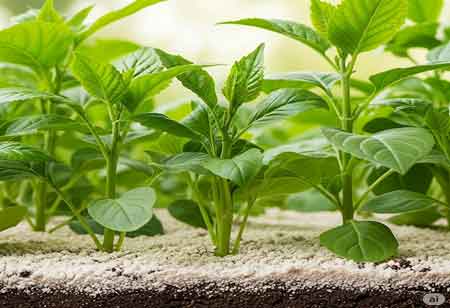Thank you for Subscribing to Agri Business Review Weekly Brief
Companion Planting Strategies to Enhance Growth and Natural Pest Control
Companion planting enhances garden growth and pest control through strategic plant pairings, utilizing beneficial interactions to create a sustainable ecosystem that supports diverse plant relationships and reduces chemical usage.

By
Agri Business Review | Tuesday, June 24, 2025
Stay ahead of the industry with exclusive feature stories on the top companies, expert insights and the latest news delivered straight to your inbox. Subscribe today.
Fremont, CA: Specific plant pairings can foster a harmonious environment in the garden, leading to vigorous growth, improved yields, and a natural defense against troublesome pests and diseases. This practice, known as companion planting, leverages the beneficial interactions between different plant species to create a self-regulating ecosystem, a testament to the power and wisdom of nature. Modern research continues to validate many of these traditional pairings, offering gardeners a sustainable and practical approach to cultivation.
Strategic Plant Pairings for Enhanced Growth
The 'Three Sisters' planting method combines corn, beans, and squash to optimize growth. The corn stalks support the beans, the beans fix nitrogen, and the squash leaves shade the soil. Basil improves tomato flavor and growth, while rosemary, a natural deterrent, provides reassurance in the battle against carrot rust fly. With its ability to attract beneficial insects like hoverflies, Dill is another ally in the fight against pests.
Natural Pest Control through Companion Planting
Plant interactions are not just random occurrences but strategic moves in the battle against garden pests. Marigolds, nasturtiums, alliums, mint, lavender, and rosemary are the soldiers in your army, effectively controlling nematodes, attracting aphids, repelling squash bugs, and attracting rust flies. Alliums, with their sulfurous compounds, are the secret weapon against aphids, carrot rust flies, and cabbage worms. Mint, your loyal ally, repels ants, moths, and flea beetles.
Recent research on companion planting sheds light on the intricate chemical and biological interactions. It particularly underscores the pivotal role of mycorrhizal fungi in the soil, enhancing nutrient uptake and bolstering disease resistance. This revelation will enlighten gardeners and horticulturists about a crucial aspect of companion planting. Scientists are also delving into allelochemical interactions, which can be harnessed to devise more potent companion planting strategies. The significance of fostering a biodiverse garden ecosystem is also underscored. Research is also delving into more nuanced interactions, such as the efficacy of specific cultivars against nematode species. Companion planting is most effective when integrated with other sustainable practices.
Companion planting involves researching compatible pairings for vegetables, herbs, and flowers, planning accordingly, considering mature size and growth habits, adjusting spacing for beneficial interactions, regularly observing plants for pest activity and growth, and experimenting with different combinations to adapt to specific garden challenges and climate, soil, and pest pressure.
Companion planting is a time-tested and increasingly validated strategy for creating a healthy and resilient garden. By understanding the beneficial relationships between different plant species, gardeners can enhance growth, naturally control pests, and reduce their reliance on synthetic chemicals. Embracing these symbiotic partnerships leads to more productive and sustainable gardens and fosters community within the backyard's intricate web of life. As an understanding of plant interactions evolves, companion planting will remain a cornerstone of ecological and successful gardening practices.





